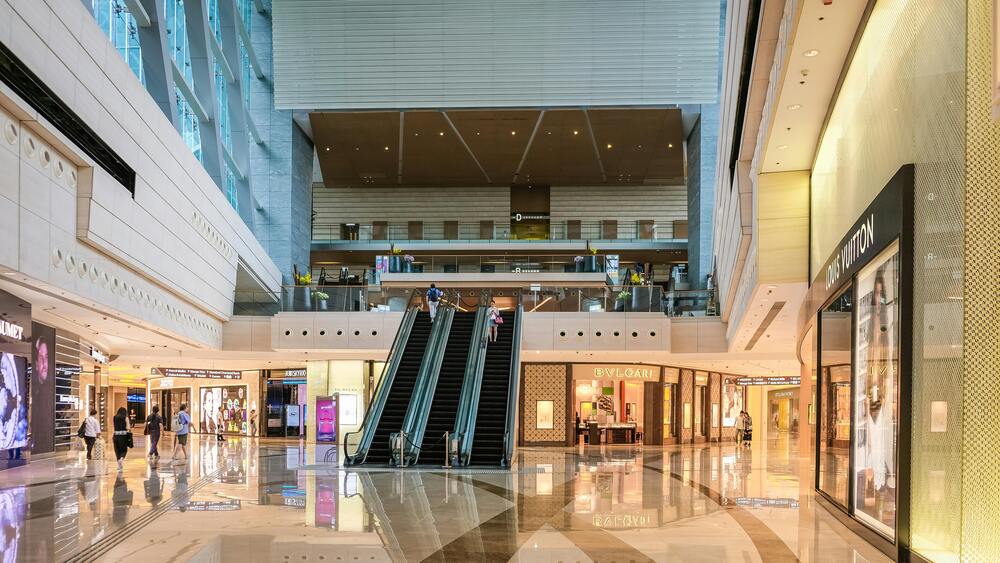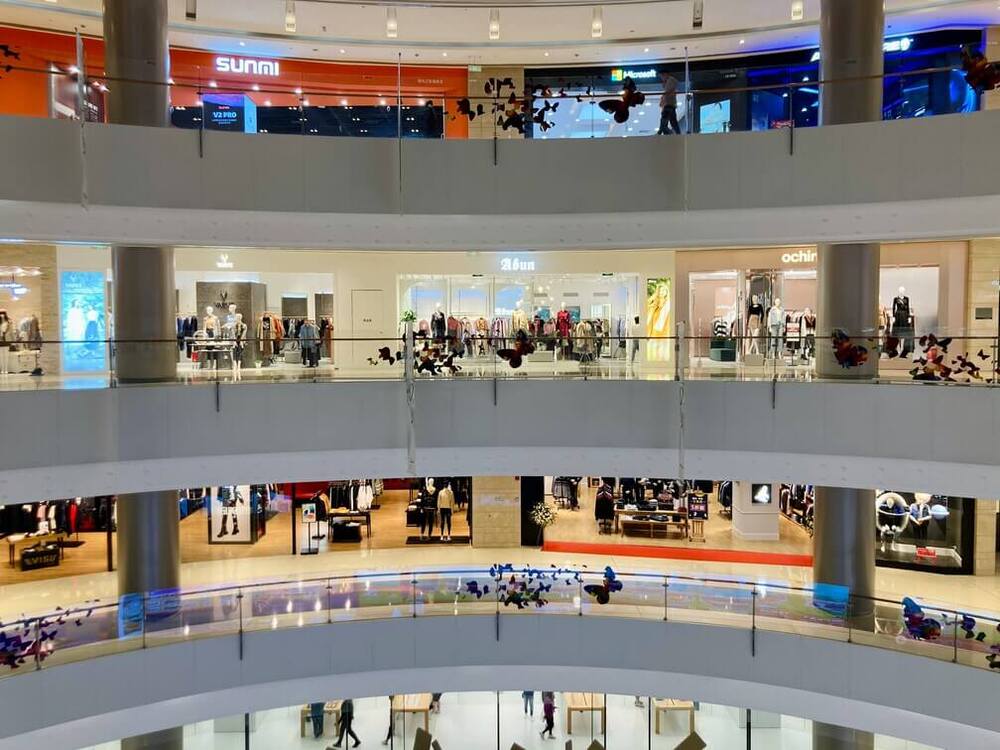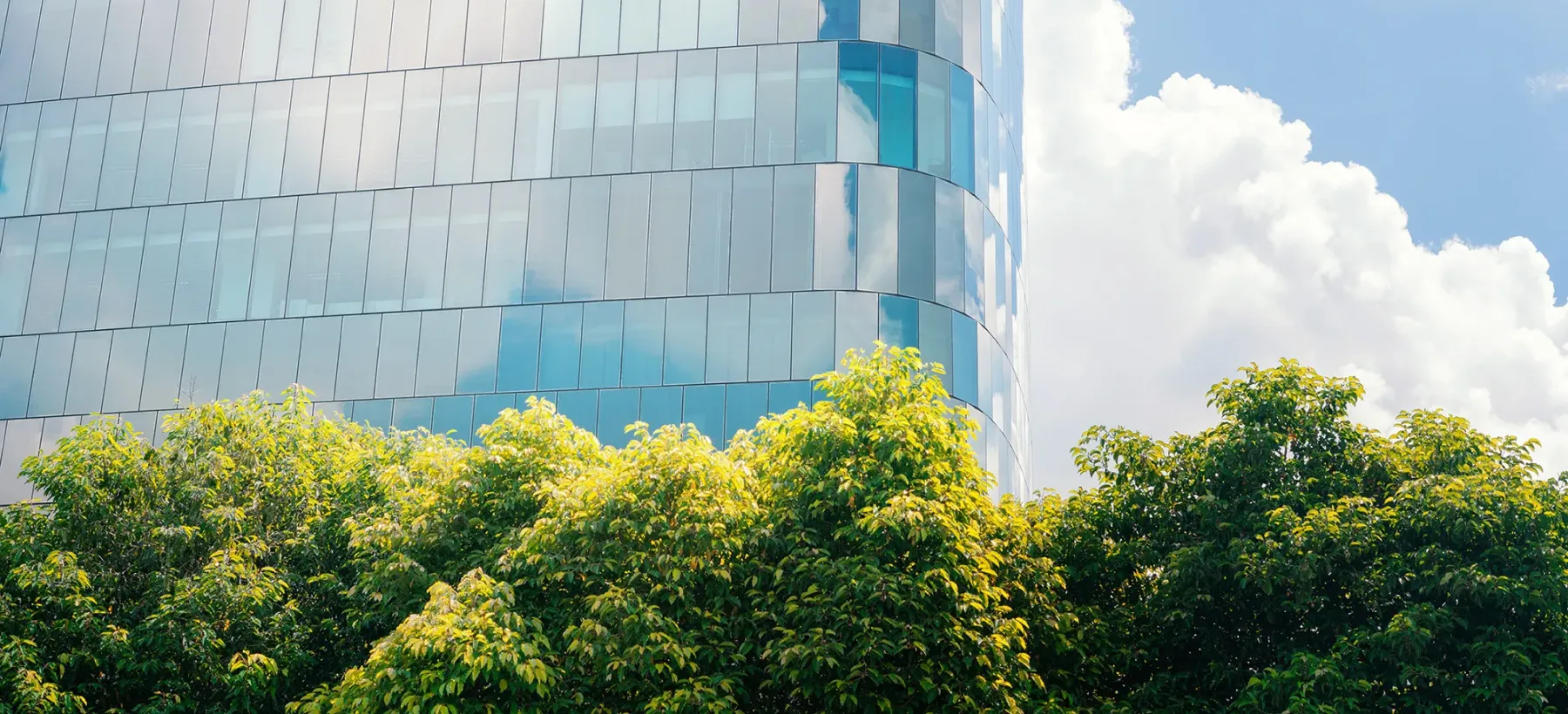2025-04-16
Asset Classes in Focus: Digital Operational Optimization for Shopping Centers

Shopping centers are more than just places to shop – they are economic hubs of modern cities. With a minimum sales area of 10,000 m² by definition, they bring together a wide range of retail stores and service offerings under one roof. In addition to smaller shops, larger anchor stores such as supermarkets, clothing stores, or electronics retailers are often present. Complementing this, dining options, bank branches, travel agencies, and cinemas offer a diverse range of services. Key characteristics of this asset class include:
- The spatial concentration of retail spaces of various sizes
- A vibrant mix of specialized stores from different industries
- Extensive parking facilities
- A central administration (e.g., facility maintenance, lease contracts, technical building management, etc.)
- Legal independence of the retail and service businesses on the premises
Due to their economic importance as centrally organized supply facilities, shopping centers play a crucial role in urban infrastructure. However, they also face significant challenges concerning their energy efficiency and technical building equipment (TBE).
Operational Efficiency as a Competitive Advantage
Shopping centers have a significant ecological footprint due to their high energy consumption for heating, cooling, ventilation, and lighting. With an average of 300 kWh per square meter per year, they are among the largest energy consumers in the European real estate sector. The resulting energy costs account for a substantial portion of operational expenses. In addition to lighting, security systems, elevators, escalators, and parking and guidance systems, the following systems in technical building equipment (TBE) are particularly energy-intensive:
- Ventilation: Centralized mechanical ventilation systems with central heat recovery systems for retail spaces, and separate systems for catering areas that require higher air exchange rates and include exhaust systems for odor control
- Heating: Individual heating solutions for retail spaces that use air from the ventilation systems, supplemented by zoned central control for unused areas
- Cooling: Large, centralized refrigeration units and decentralized split air conditioning systems for small retail spaces or special applications are also very energy-intensive, especially in the hot season or in heavily frequented areas
By implementing sustainable measures in operations, owners can improve both their cost structure and their attractiveness for tenants and investors. This is especially important for non-residential buildings, where strict energy efficiency and CO₂ reduction regulations apply in Germany and the EU. Those who meet these requirements early on not only avoid penalties, but also prevent value losses in an increasingly competitive market.

Special Characteristics and User Requirements
Depending on the tenant structure, shopping centers have specific requirements that must be taken into account for optimal operation:
Large, Open Spaces
In addition to retail units and integrated catering and leisure areas, a shopping center's total area includes malls (walkways and event spaces), management offices, and sanitary facilities. These areas require significant energy for heating, ventilation, and cooling throughout the year. High cooling or heating loads in areas such as kitchens or busy retail stores pose significant challenges for efficient operation.
Diverse Space Utilization
Different sized retail units with different usage concepts - such as restaurants, clothing stores, or entertainment facilities - have vastly different requirements for climate control, ventilation, and lighting. Targeted regulation is necessary to ensure an optimal indoor climate in each zone, such as additional heating for clothing stores or increased ventilation in restaurants.
Extended Operating Hours
Long opening hours, often seven days a week, put continuous strain on technical systems. This leads to increased energy consumption for heating and air conditioning and necessitates robust maintenance strategies to minimize wear and tear, prevent system failures, and ensure long-term operational efficiency.
Fluctuating Visitor Numbers
Visitor frequency in shopping centers varies significantly - from quiet periods during the day to peak times on weekends. These fluctuations require a dynamic, demand-driven regulation of ventilation and climate control systems, for example, based on CO₂ levels or temperature changes due to body heat. The goal is to maintain consistent air quality and a comfortable indoor climate, even with changing occupancy levels.
Measures for Digital System Optimization
Enhancing energy efficiency in shopping centers does not always require extensive renovations. As demonstrated by experience with the aedifion software solution, digital optimization per cloud-platfom alone offers significant savings potential while giving both owners and operators full control over all building systems.
Ensuring high user comfort while simultaneously meeting energy efficiency targets should remain a top priority. The efficient operation and seamless coordination of various systems are crucial for the functionality, energy efficiency, and economic viability of a shopping center.
The right software solutions can be seamlessly integrated into existing building management systems. They collect and structure operational data in real time, detect malfunctions, andprovide concrete optimization recommendations. On request, pre-configured AI algorithms can even autonomously regulate operations, ensuring an economical and demand-driven building operation - regardlessof the season or time of day.
Typical optimization measures could be:
- Real-time monitoring of system conditions and performance indicators
- Adjusting ventilation schedules based on visitor frequency (e.g., reduced operation on weekday mornings)
- Predictive ventilation control using weather forecasts and real-time data from people-counting systems
- Optimizing heat recovery in ventilation systems to maximize the use of already generated energy
- Intelligent demand side management to reduce energy costs
- Dynamic electricity cost optimization to make the most of dynamic tariffs and self-generated electricity
Success Story: The Ettlinger Tor Shopping Center in Karlsruhe
Practical experience also demonstrates that AI-based, predictive system operation leads to significant savings in daily operations:
At the Ettlinger Tor Shopping Center in Karlsruhe, aedifion's software solution enables the operations team to transparently monitor all technical systems and operational data. The AI-powered software identifies savings potential in real time and autonomously optimizes operations. The result is annual savings in operating costs of 57.000 euros and a reduction in CO2 emissions of 74 tons per year - equivalent to the annual carbon offset capacity of approximately 5,920 trees.

Optimizing shopping centers through cloud platforms and artificial intelligence not only enables significant savings but also enhances the competitiveness and sustainability of entire portfolios thanks to its high scalability.
We provide comprehensive and professional support - from developing tailored digitalization strategies to implementation and AI-driven optimization in ongoing operations.
Contact us to make yours hopping centers fit for the future!
Buildings Simply Made Better
Get in Touch With US!
In a one-on-one meeting, we will clarify your specific requirements and demonstrate how our AI-based cloud solutions and service packages can benefit you.





